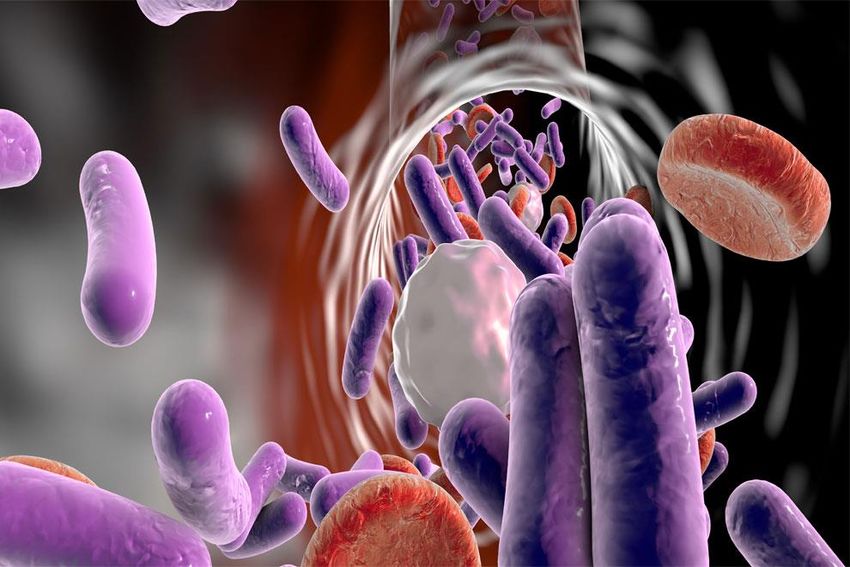Shock \\ cases

3. Cardiogenic Shock 60min
Questions:
1 Hypovolemic shock hemorrhagic, traumatic, burn). Etiology,
pathophysiology, clinic, diagnostics.
2 Vascular shock (anaphylactic, septic). Etiology, pathophysiology, clinic, diagnostics.
3 Cardiogenic shock
Cases
Case 1 Patient F, for about 1 week was in the department for pneumonia, on day 9, the temperature dropped from 39.2 to 36.1 within 2 hours. The patient complains of severe weakness, is pale, covered with cold sweat, the pulse is threadlike, frequent. BP 80/40 mm Hg deaf heart sounds, tachycardia. Indicate symptoms, syndromes, follow-up examination, treatment.
Case 2 Patient V., 44 years old, was taken by car to the hospital after being burned by a flame 40 minutes after the injury. It is known from the anamnesis that gasoline ignited during repair work in the garage.
Upon admission to the emergency department, the patient's condition is severe. On the torso, there are visually scraps of burnt clothing. Complaints of pain throughout the body, cold, thirst. The skin of the face is pale. PS 120 beats in 1 min. BP 120/70 mm Hg The patient is inhibited, trembling, there was a single vomiting, breathing is not even. There are no wheezing in the lungs. Tongue dry. The stomach is somewhat swollen. Urine through a urethral catheter 100 ml. After removing the clothes, it was found that on the entire front surface of the body, the upper extremities there are multiple blisters with hemorrhagic contents. Some of the bubbles burst. In this case, superficial burn wounds are determined at various sites of the lesion. Their bottom is dry, dull, speckled or red-black, there is no pain when touching. Both hands have dark brown and black scabs.
Diagnosis, syndromes. Inspection. Help
Case 3 As a result of an accident on the road, the driver received numerous soft tissue bruises, bruised and cut wounds of the soft tissues of the face. The patient was taken to a permanent emergency room.
On examination: the victim is pale, answers questions reluctantly, quietly and laconically. Complains of dizziness, tinnitus, nausea, flashing "flies" before the eyes. Shallow breathing, up to 32 respiratory movements in 1 minute, blood pressure 90/50 mm Hg. Art. Examination of the chest and extremities did not reveal any reliable signs of bone fracture. Examination of the abdomen revealed the absence of tension in the anterior abdominal wall, symptoms of peritoneal irritation and the presence of free fluid in the abdominal cavity. Express blood test showed a hemoglobin level of 134 g / l. Indicate symptoms, syndromes, follow-up examination, treatment.
Case 4 Young man M., 18 years old, is unconscious on the floor after being hit by an electric shock due to damage to the electrical wiring. The patient's condition is serious, external respiration is preserved, the pulse on the carotid arteries is not palpable. BP is not determined. Indicate symptoms, syndromes, follow-up examination, treatment.
Case 5 A doctor on night duty was summoned to a 38-year-old patient L. undergoing treatment with a diagnosis of nosocomial pneumonia.
25 minutes ago, the patient broke bed rest, after which he felt bad: weakness, dizziness, flashing of flies before his eyes, Objectively: the state of moderate severity, consciousness is preserved, the patient is frightened, the skin is pale, abundantly covered with cold sticky sweat. BP 80/50 mm. rt. Art., pulse threadlike 102 per minute.
Indicate symptoms, syndromes, follow-up examination, treatment.
Case 6 Passers-by from the street called an ambulance for the patient, patient D. with complaints of general weakness, a feeling of nausea. There was a short-term loss of consciousness. When examining the patient, the temperature is 35.9 C., visually the skin is pale, moist, the lips are cyanotic. Respiration is quickened, vesicular, NPV = 28 in 1 min., No wheezing. Heart sounds are muffled rhythmic. Blood pressure 80/60 mm Hg, pulse of weak filling, tension, 112 in 1 min. The abdomen is soft, there is slight pain in the epigastrium. In the morning on the way to work I felt unwell. History of gastritis.
Indicate symptoms, syndromes, follow-up examination, treatment.
Case 7 The “Ambulance” team was called to the house of a 1.5-year-old boy. The child was in the kitchen unattended and knocked over a pot of boiling water. On examination: the child is conscious, pronounced psychomotor agitation, cry. On the antero-lateral surface of the chest and trunk on the left, there are extensive areas of hyperemia and bubbles filled with light contents. There are eroded areas on the skin of the forearm, left hand and left thigh. BP - 90/40 mm Hg, respiratory rate - 40 per minute, heart rate - 128 beats per minute. Breathing when listening to the lungs is vesicular, the heart sounds are sonorous, rhythmic. The abdomen is soft on palpation. Body 36.9 C
Diagnosis. Inspection. Syndromes. Treatment.